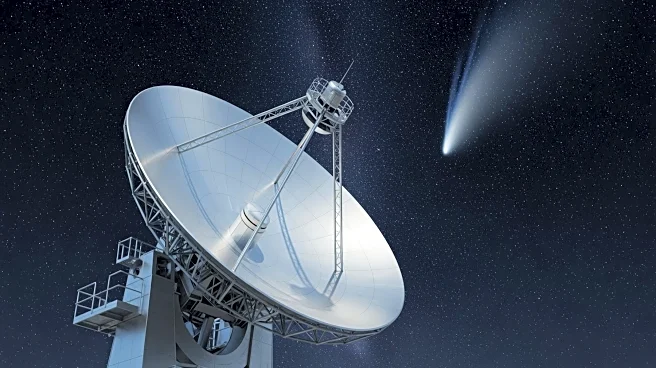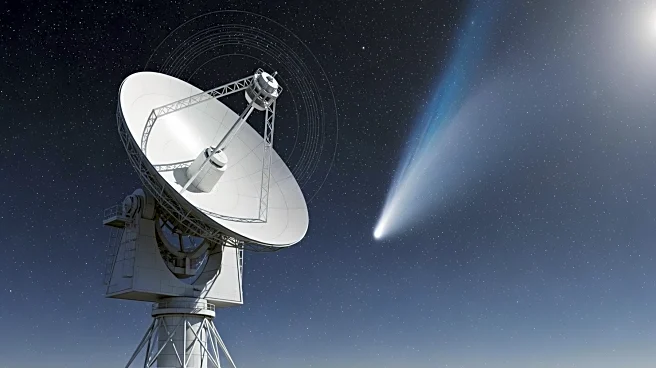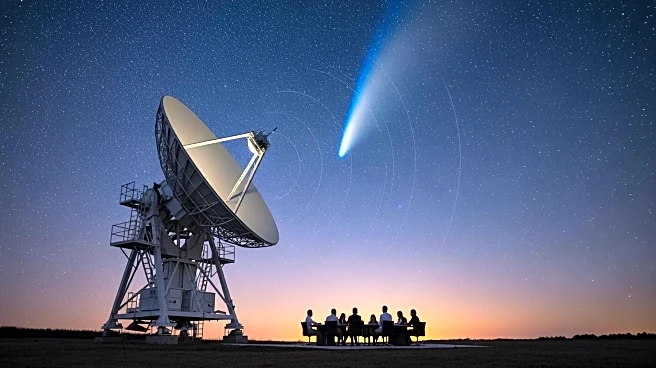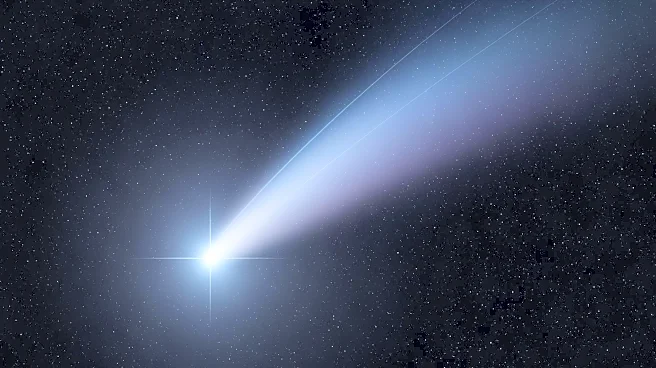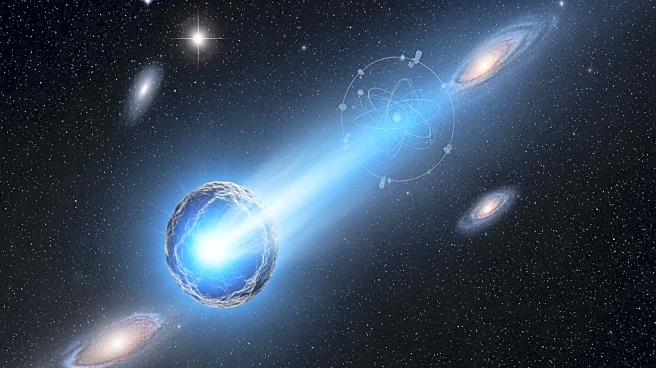What's Happening?
Astronomers at South Africa's MeerKAT radio telescope have detected the first radio emissions from the interstellar comet 3I/ATLAS. This discovery coincided with the comet's closest approach to the sun,
known as perihelion, on October 29. Despite initial speculation by some scientists, including Harvard University astrophysicist Avi Loeb, that the comet might be an alien spacecraft, the radio signals were found to be of natural origin. The signals are attributed to the presence of hydroxyl radicals in the comet's coma, formed by the breakdown of water molecules during outgassing. This finding further supports the comet's classification as a natural object, dispelling theories of alien activity.
Why It's Important?
The detection of natural radio signals from 3I/ATLAS is significant as it reinforces the understanding of interstellar objects and their natural origins. This discovery contributes to the scientific community's efforts to study and classify interstellar comets, which are rare and provide insights into the composition and behavior of celestial bodies from outside our solar system. The confirmation of natural origins helps focus scientific research on understanding the processes involved in cometary activity, rather than diverting attention to unfounded alien theories. This can lead to advancements in astrophysics and a better understanding of the universe.
